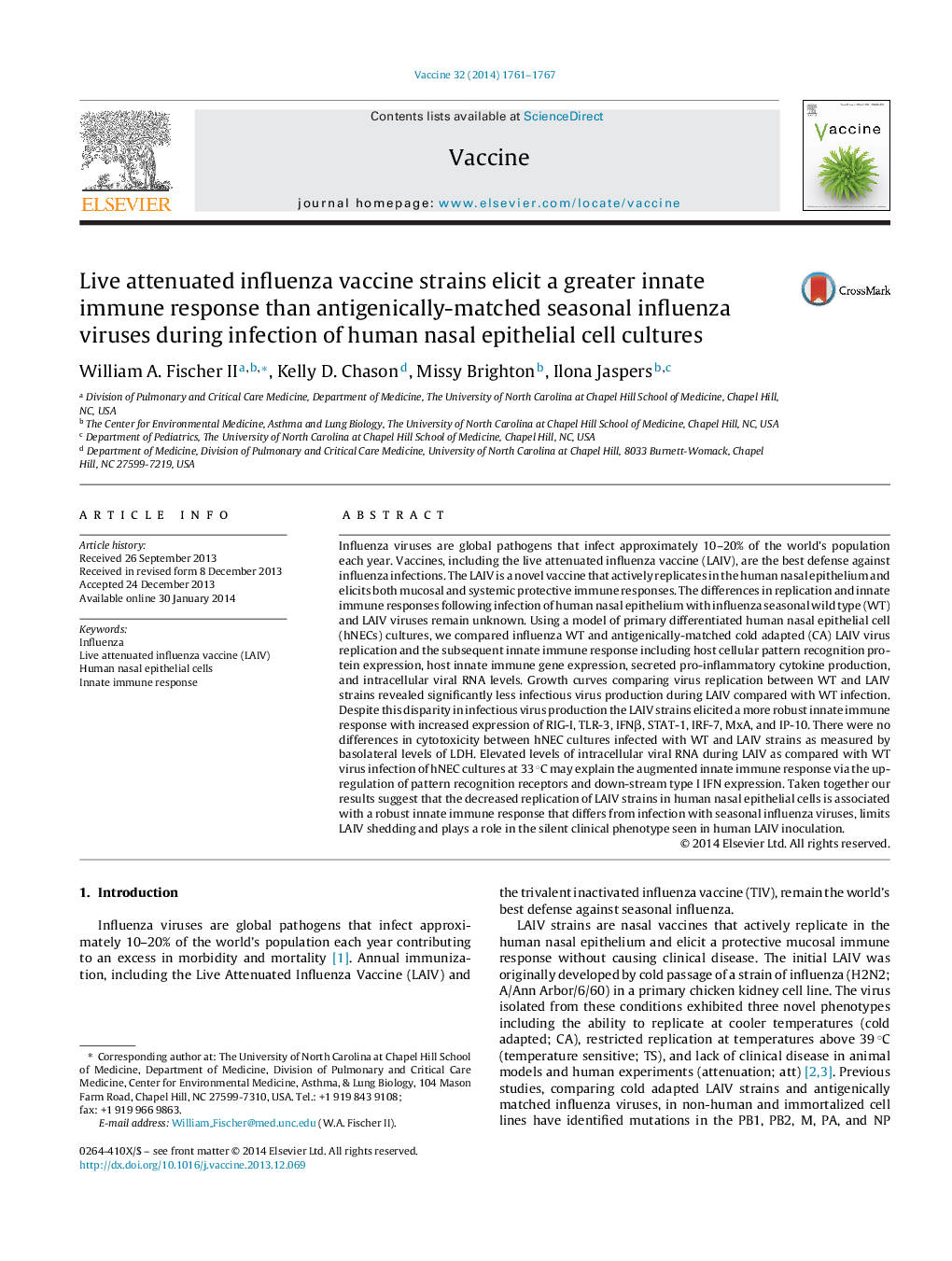| کد مقاله | کد نشریه | سال انتشار | مقاله انگلیسی | نسخه تمام متن |
|---|---|---|---|---|
| 2402260 | 1102735 | 2014 | 7 صفحه PDF | دانلود رایگان |
• We compare the immune response to, and replication of, influenza viruses and live vaccines in hNECs.
• Despite lower replication, the LAIV viruses elicit a more robust innate immune response.
• LAIV infection of hNECs results in a differing chemokine expression profile than WT infection.
• The increased innate immune response is likely due to an increase in the level of intracellular viral RNA.
Influenza viruses are global pathogens that infect approximately 10–20% of the world's population each year. Vaccines, including the live attenuated influenza vaccine (LAIV), are the best defense against influenza infections. The LAIV is a novel vaccine that actively replicates in the human nasal epithelium and elicits both mucosal and systemic protective immune responses. The differences in replication and innate immune responses following infection of human nasal epithelium with influenza seasonal wild type (WT) and LAIV viruses remain unknown. Using a model of primary differentiated human nasal epithelial cell (hNECs) cultures, we compared influenza WT and antigenically-matched cold adapted (CA) LAIV virus replication and the subsequent innate immune response including host cellular pattern recognition protein expression, host innate immune gene expression, secreted pro-inflammatory cytokine production, and intracellular viral RNA levels. Growth curves comparing virus replication between WT and LAIV strains revealed significantly less infectious virus production during LAIV compared with WT infection. Despite this disparity in infectious virus production the LAIV strains elicited a more robust innate immune response with increased expression of RIG-I, TLR-3, IFNβ, STAT-1, IRF-7, MxA, and IP-10. There were no differences in cytotoxicity between hNEC cultures infected with WT and LAIV strains as measured by basolateral levels of LDH. Elevated levels of intracellular viral RNA during LAIV as compared with WT virus infection of hNEC cultures at 33 °C may explain the augmented innate immune response via the up-regulation of pattern recognition receptors and down-stream type I IFN expression. Taken together our results suggest that the decreased replication of LAIV strains in human nasal epithelial cells is associated with a robust innate immune response that differs from infection with seasonal influenza viruses, limits LAIV shedding and plays a role in the silent clinical phenotype seen in human LAIV inoculation.
Journal: Vaccine - Volume 32, Issue 15, 26 March 2014, Pages 1761–1767
